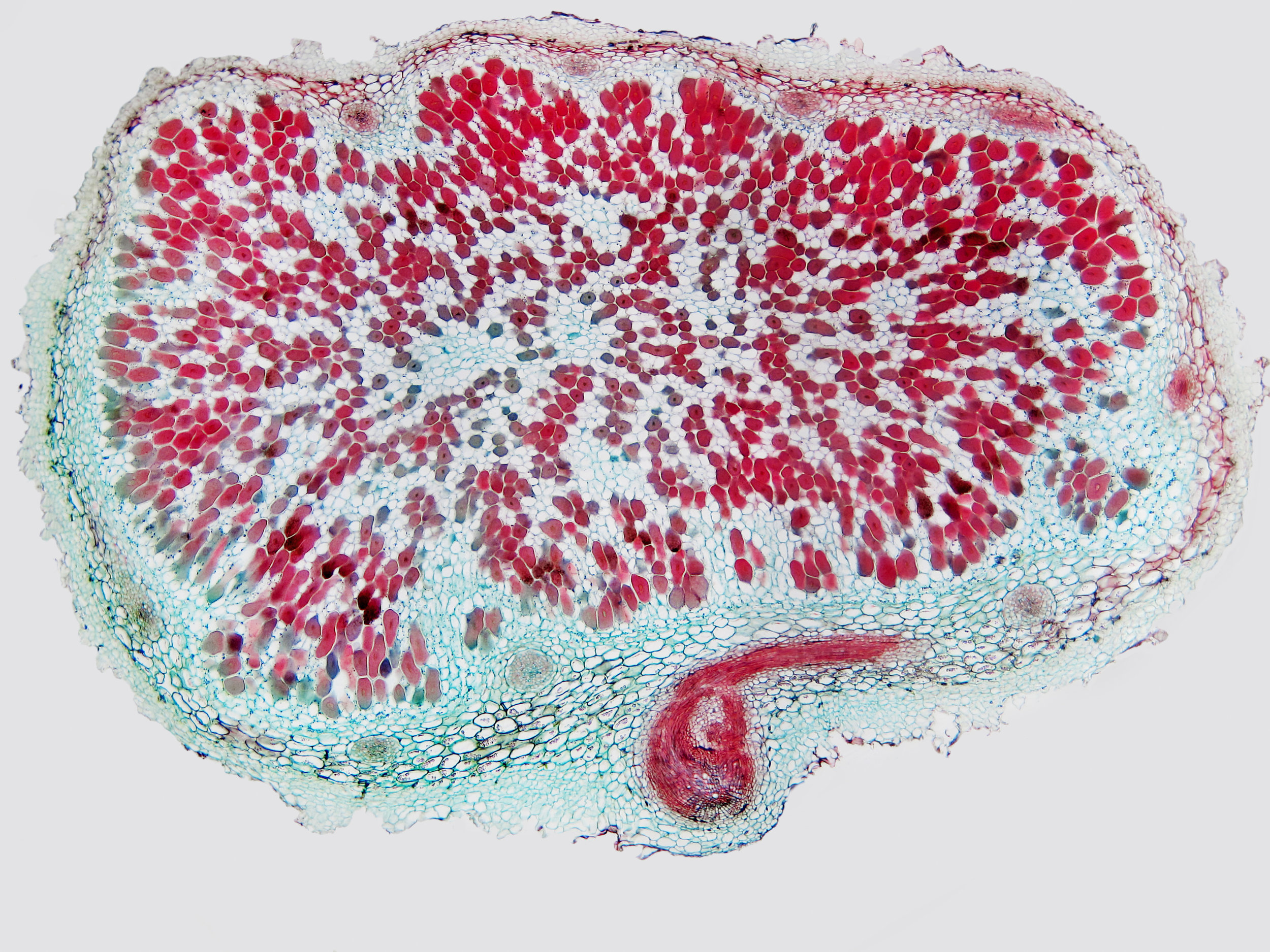Before supplementing minerals to promote disease resistance we recommend a complete soil assessment to gain a comprehensive understanding of current soil conditions and the necessary steps required to achieve balance. After following these general recommendations, we can begin to look at more nuanced mineral interactions and how we can promote disease resistance.
Growing grapes with resistance to powdery mildew requires taking a closer look at Ca, K, Mn, Cu, and Si.
Calcium acts as the backbone of plant fertility by serving as a vehicle to shuttle nutrients into the plant. Calcium forms the structural components of cell walls and in adequate amounts provides the appropriate soil structure for beneficial soil microbes.
Calcium is considered an immobile nutrient as it generally stays fixed in one part of the plant. Key to growing disease resistant plants is having adequate supplies of calcium throughout the growth cycle. Maintaining soil moisture allows for the necessary microbial activity to consistently pull calcium into a plant available form. To better ensure calcium uptake throughout the growing season, and particularly during the critical development periods of cell division and fruit fill, we supplement calcium with foliar Provita Mineral Tea applications.
By simply taking this approach with calcium we have seen dramatic decreases in powdery mildew and other fungal pathogens in grapes and many other crops. With that said, integrating a similar approach to the following minerals produces crops with even more disease resistance plus higher quality and yields.
Potassium is a catalyst for more than 300 enzyme systems, is required in chlorophyll construction, is essential for starch synthesis, photosynthesis, protein synthesis, the translocation of sugars, flowering, fruiting and greatly improves water usage and reduces plant stress in drought conditions.
Potassium should generally make up between 2-5% base saturation and for grapes can be as high as 7%.
As a mobile cation, Potassium is highly antagonistic to calcium and when in excess will displace calcium within the plant.
All too often we see soils and plant sap/tissue with excess potassium caused by over application, poor timing of application or an incomplete understanding of soil conditions.
When potassium is in excess during the vegetative stage and initial fruit fill stage, when rapid cell division is happening, calcium absorption is inhibited, and diseases and pathogens are free to take hold. Potassium is most need during the later fruit fill stages with 60-80% of the plant’s total potassium requirement being used in the last 4-5 weeks of fruit fill.
Manganese is needed for the assimilation of C02 to produce plant carbohydrates and for the assimilation of nitrates and more generally nitrogen metabolism. Mn activates. the shikimate pathway which functions to produces phenolics and other plant protectants essential to plant immunity. Additionally, manganese plays a key role in chlorophyll synthesis, accelerates germination, fruit set, ripening and activates calcium, phosphorus, and iron.
As an essential co-factor in activating the shikimate pathway and therefore the production of phenolics and other phytoalexins, proper levels of manganese are necessary for building disease resistance in plants.
Manganese also plays a key role in regulation the uptake of potassium. Not only does manganese improve the efficiency of potassium uptake and translocation, it also downregulates and slows uptake of potassium which allows for calcium to more effectively move into fruit during the critical cell division phase.
Copper is essential for root metabolism, sugar synthesis, and chlorophyll production. Without adequate levels of copper plants are limited in their construction of structural carbohydrates like cellulose and lignin and are therefore susceptible to fungal disease. Copper is a major contributor of Plant Secondary Metabolites and plant immune support. Copper increases sugar content of fruits and vegetables, contributing to both color and flavor, also improving shelf life, storage
We recommend reaching the target levels of copper both in the soil and within the plant for maximum disease resistance. As a nutrient within the plant copper exhibits 75% percent of its fungicidal response, versus only 25% when applied on the leaf as a copper-based fungicide.
Silicon is the second most abundant mineral on Earth. However, mono silicic acid, the plant available version of silicon is very deficient across the majority of soils. Silicon strengthens cell walls and promotes stem strength which optimizes the xylem and phloem and improves nutrient translocation. Silica mobilizes Mn to infection sites on plants - promotes the activation of shikimate pathway to counter pathogen infection.
Dicot plants are poor accumulators of silicon and greatly benefit from supplemental applications of Si. Foliar applications of Si have been shown to reduce the number of powdery mildew colonies on inoculated grape leaves by 60% (Blaich and Grunhofer 1998).
We have highlighted the aforementioned mineral nutrients for their particular importance in the production of powdery mildew resistant grapes. With that said, it is important to understand the synergistic and antagonistic relationships between these and all minerals in order to grow truly disease resistant crops. Our soil/plant assessment will give you this understanding plus the practical steps and tools required to achieve an elite level of production.





